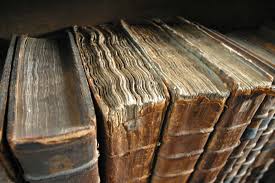Some of the popular mayan books are listed below :
The Dresden Codex -the Book of Mayan Astronomy
The results of Mayan observations and calculations of astronomical phenomena are concentrated in the Dresden Codex. It is a band of paper 3.5 meter long set up into 39 sheets making up 78 pages 8.5 x 20.5 cm. The paper was obtained from the bark of wild-growing species of fig tree. It is supposed that it originates from Yucatan as a latter transcription of an elder original.
It contains calendrical data, written in the Mayan dating system, concerning astronomical data and the sky mechanics, and tables of multiple integers that are to be used for calculations of planetary movement ephemerids and tropical years, next to the hieroglyphic texts and numerous depicturing of the Mayan gods and ritual scenes.
Prophecies
The authors demonstrate how the Mayan Holy Number 1,366,560 days, known as the birth of Venus and the basis of their calendar, indicates ancient knowledge of sun spot cycles and their effect on the human race. They explore the popular myth of Quetzalcoatl and its origins in Maya ideas concerning the sun cycle.

They show the links between the pre-Columbian civilizations of Central America and the Old World, in particular Egypt. Examining the archaeological record, they find further evidence for linking the origins of Mayan civilization with the mythical lost continent of Atlantis, which according to Plato was destroyed in a series of catastrophes.
The Ancient Maya
This book traces the evolution of Maya civilization through the Pre-Columbian era, a span of some 2,500 years from the origins of complex society within Mesoamerica to the end of the Pre-Columbian world with the Spanish Conquest in the 16th century. The sixth edition presents new archaeological evidence and historical studies and offers the most extensive revisions of this classic work to date.
Popol Vuh
The "Popol Vuh," written in a Mayan language but a European script, is the most substantial surviving account of the Maya view of their own history, including that of their gods and divine ancestors, and has presented a host of problems for translators. The Tedlock translation of 1985 added new information to the work of many distinguished predecessors, and made substantial parts of the narrative clear.
Cosmogenesis 2012: The True Meaning of the Maya Calendar End-Date
While researching the 2012 end-date of the Maya Calendar, John Major Jenkins decoded the Maya's galactic cosmology. The Maya discovered that the periodic alignment of the Sun with the center of the Milky Way galaxy is the formative influence on human evolution.

These alignments also define a series of World Ages. The fourth age ends on December 21, 2012, when an epoch chapter in human history will come to an end. Maya Cosmogenisis 2012 reveals the Maya's insight into the cyclic nature of time, and prepares us for our own cosmogenesis--the birth of a new world.
|